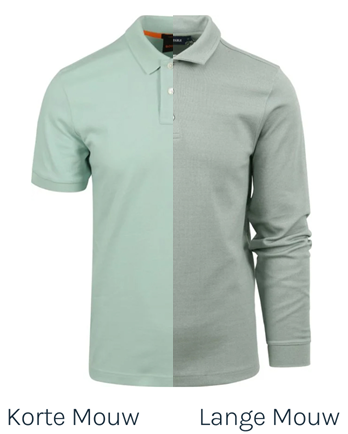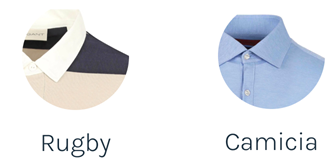The polo, the stylish cousin of the T-shirt, was introduced in 1926 by tennis legend René Lacoste. One day, he swapped the traditional match attire of a shirt and tie for the then-revolutionary polo shirt. Lacoste went on to win the tournament, and the polo shirt instantly became a hit! Once his tennis career ended, he teamed up with his friend André Gillier, and the Lacoste brand was born. Before long, fashion houses were showcasing the polo shirt on the runway. Today, every man has at least one polo in his wardrobe, but how do you find the one that suits you perfectly?
1. Start with the Neckline

When choosing a polo, the neckline is an important aspect to consider, as it affects not only comfort but also the overall look and style. The classic button placket is versatile and timeless. Leaving one or two buttons undone gives your outfit a more casual feel. A buttonless neckline offers a smooth silhouette with a relaxed, summery vibe. There are also zip-up polos for a sporty and athletic look. It’s wise to match your choice to your personal style and the occasion for which you’ll be wearing the polo.
2. Think about the fabric

The traditional polo shirt is made from piqué, a textured knit that provides breathability and durability. Piqué polos have a sporty, timeless appearance, making them easy to incorporate into various outfits. Another popular fabric is jersey, a smooth, soft material known for its comfort and flexibility. Jersey polos are usually lighter and have a more modern look. For a distinctive style, you can opt for knitted polos, which give your outfit a refined, elegant touch.
3. Choose the right fit

Men’s polos come in a variety of sizes and fits. Most modern polo shirts are tailored, meaning the fabric has been adjusted to accentuate your body shape. As a result, the polo fits snugly but shouldn’t feel restrictive. If you have the chance to try on a polo, pay attention to the following:
- The shoulder seams should sit precisely on the edges of your shoulders.
- The sleeves of a short-sleeve polo should reach halfway down your biceps.
- You should be able to move your arms comfortably without the fabric stretching or pulling.
- The polo should fit snugly around your chest without being too tight.
- The ideal polo length should hit around the middle of your trouser fly.
4. Experiment with colours
Classic polo colours include white, black, and navy blue. These are versatile and timeless, perfect for both casual and formal occasions. Neutral shades like grey, beige, and olive green offer a subtle, refined look and pair well with almost any pair of trousers or shorts. Additionally, there are polos in vibrant, energetic colours such as red, yellow, and green, which are great for summer or for making a statement. Pastel tones like light blue, pink, and mint green are also popular, especially in spring and summer, adding a soft, friendly touch for a laid-back vibe.
5. Don’t forget the sleeves!

The original polo was designed with short sleeves for summer tennis matches. Today, you can also find long-sleeve polo shirts, which are great for cooler days and work well as part of a layered outfit.
6. Looking for something unique?

If you want to stand out, there are special variations of the polo shirt. The rugby shirt, for example, is similar to a long-sleeve polo but made from sturdier piqué fabric. Traditional rugby shirts also feature reinforced shoulders and sleeves, horizontal stripes, and a white collar. A Camicia polo, on the other hand, is an elegant version with a modern twist. It has the appearance of a long-sleeve polo but is as comfortable to wear as a shirt.
Poloshirt don’ts
We’ll wrap up with a few fashion faux pas to avoid when wearing a polo:
- Buttoning up the top button of your polo.
- Popping the collar of your polo shirt.
- Wearing a basic T-shirt or undershirt that is visible underneath your polo.


